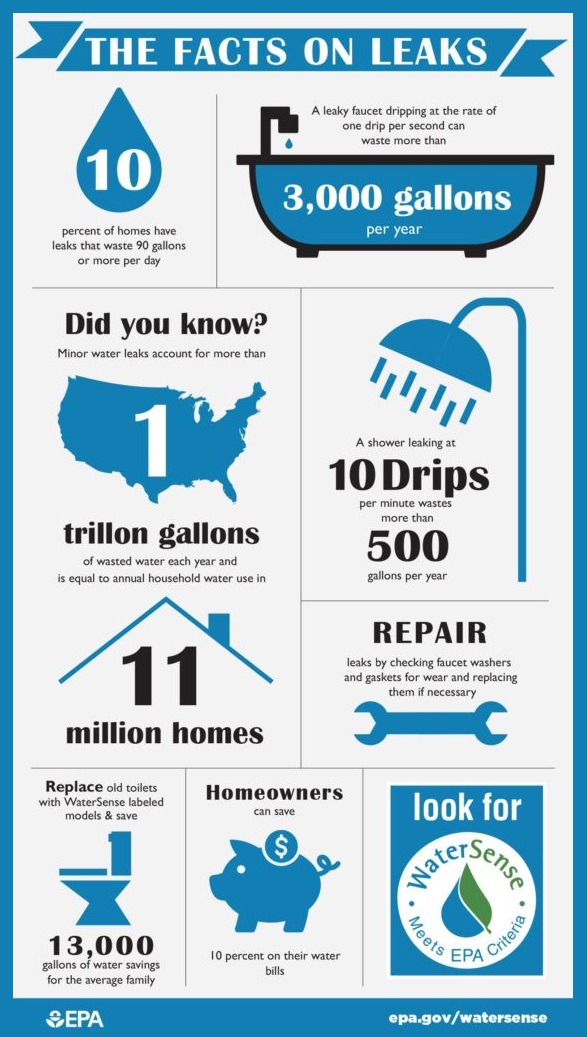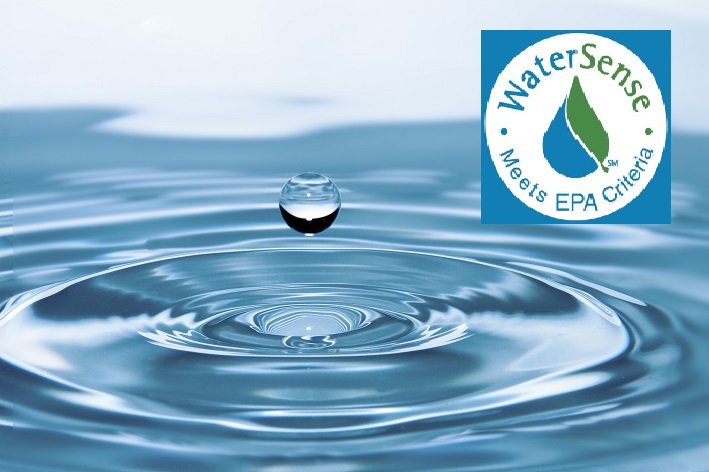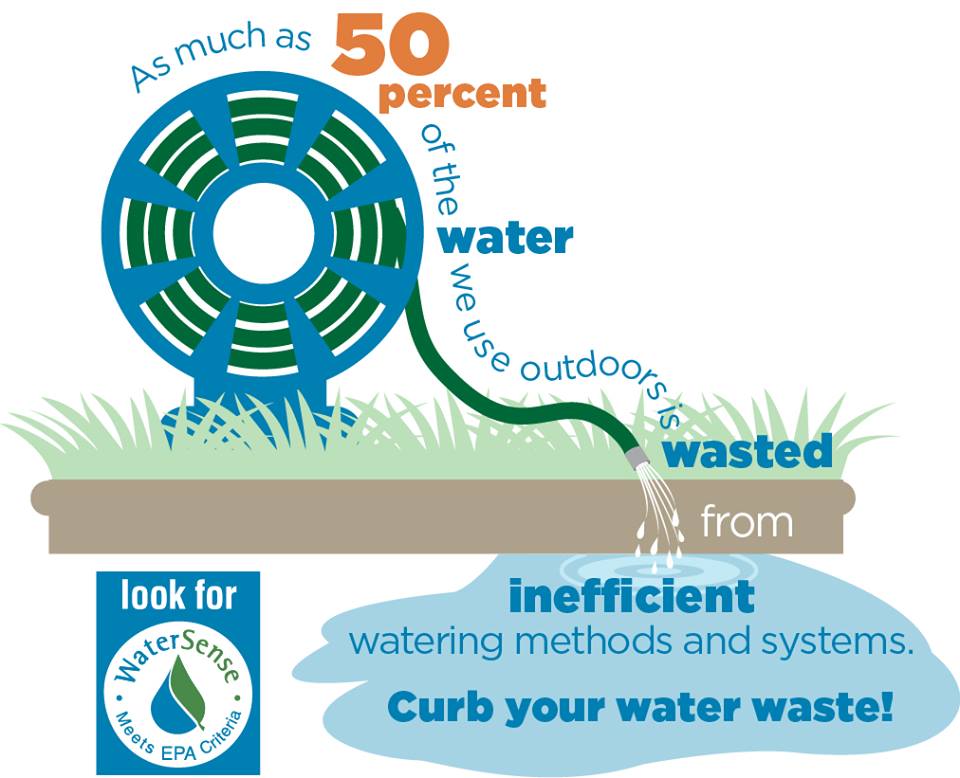
by Tom Barrett | Mar 6, 2019
Fix a Leak Week Combats Water Waste
Every year the EPA sponsors “Fix a Leak Week” as a national effort to combat water waste.
That’s because, every year, household leaks can waste more than 1 trillion gallons of water nationwide! How much water is that? It’s…
- Enough to fill 40 million swimming pools and 24 billion bathtubs
- Almost equal to the capacity of Florida’s vast Lake Okeechobee
- Equal to the annual household water usage of more than 11 million homes
Plug Those Leaks!
 This year’s Fix a Leak Week runs from March 19 through March 25. It’s the perfect time to check for leaky kitchen and bathroom faucets, malfunctioning toilets and errant irrigation systems. Fixing some of these easily corrected household leaks can save homeowners about 10 percent on their water bills, according to the EPA.
This year’s Fix a Leak Week runs from March 19 through March 25. It’s the perfect time to check for leaky kitchen and bathroom faucets, malfunctioning toilets and errant irrigation systems. Fixing some of these easily corrected household leaks can save homeowners about 10 percent on their water bills, according to the EPA.
Karen Wirth is in charge of marketing and outreach for the EPA’s WaterSense program. In her view, most folks are clueless about the total amount of water wasted because they “see a couple of drips coming out of their shower head, or sprinkler outside, or faucet, it doesn’t seem like that much.”
Did You Know…
… Homeowners can save about 10 percent on their water bills just by plugging leaks?
So each year, the EPA hones in on the drips during Fix a Leak Week. Special events are planned from coast to coast to teach homeowners how to find and fix household leaks.
Easy Fixes
There’s a simple way to check for leaks in the toilet, Wirth said. “Just put a few drops of food coloring in the tank. If that shows up in the bowl, you have a leak.” This problem can often be fixed by simply replacing the flapper.
Replacing old and worn faucet washers and gaskets fixes most faucet leaks. For leaky shower heads, use pipe tape to secure the connection between the showerhead and the pipe stem.
For the EPA’s complete list of leak fixes, click here.
Call an Irrigation Professional
A residential irrigation system should be checked each spring before use to make sure it wasn’t damaged by frost or freezing. Even a leak as small as 1/32nd of an inch in diameter (about the thickness of a dime) can waste about 6,300 gallons of water per month!
Hire an irrigation professional certified by a WaterSense labeled program to inspect it for you. These professionals have passed a certification program focused on water efficiency. They’ll not only help detect and correct leaks in the system, but also maximize its efficiency.
Sources:
EPA
The Washington Post
Alliance for Water Efficiency

by Tom Barrett | Jun 6, 2018
Smart Irrigation Month Is
Right Around the Corner
July is the peak month for water consumption in the U.S., which is why every July the Irrigation Association uses its national platform to promote smart irrigation practices and technologies.
This year, why not join them in taking Smart Irrigation Month to the next level?
First launched in 2005, this national campaign continues to gain traction each year as consumers and irrigation specialists alike recognize the positive impact efficient irrigation and water use provides to all of us.
Smart Systems
Among the strategies being presented to consumers, first and foremost is proper programming of automatic watering or sprinkler systems to deliver just the right amount of water at the right time.
Additional strategies include:

- Proper landscaping, keeping soil healthy, mulching and routine landscape maintenance
- Watering during the evening and early morning to prevent evaporation, taking soil type and sprinkler placement into consideration
- Maintaining the sprinkler system regularly by adjusting sprinkler heads, repairing leaks and monitoring pressure
WaterSense
 According to the EPA’s WaterSense website, adopting water-savvy habits also is essential to maintaining and extending our communities’ water supplies, especially during peak use. WaterSense partners with manufacturers, retailers/distributors, and utilities to bring high-performing, water-efficient products to the marketplace.
According to the EPA’s WaterSense website, adopting water-savvy habits also is essential to maintaining and extending our communities’ water supplies, especially during peak use. WaterSense partners with manufacturers, retailers/distributors, and utilities to bring high-performing, water-efficient products to the marketplace.
WaterSense also partners with professional certifying organizations to promote water–efficient landscape irrigation practices. Since the program began in 2006, WaterSense has helped consumers save a total of 1.5 trillion gallons of water, resulting in more than $32.6 billion in water and energy bill savings.
Take the Tuna Can Test!
Place a few empty tuna cans randomly around your lawn, with some cans close to the sprinkler head and others several feet away. Turn on your system and measure how much time it takes your sprinkler to fill the cans with a half inch of water. Then, try watering for that amount of time twice a week. Gauge how your landscape responds, and adjust based on weather conditions.
 Alternatively, you can simplify this system by replacing your standard clock timer controller with a WaterSense-labeled irrigation controller.
Alternatively, you can simplify this system by replacing your standard clock timer controller with a WaterSense-labeled irrigation controller.
Get On Board
Here are just a few of the many “Smart Ideas” irrigation professional can use to promote Smart Irrigation Month:
- Add the Smart Irrigation Month logo to your website, ads, customer presentations, field signs, invoices and more.
- Submit a press release or letter to the editor of your local newspaper.
- Ask employees to add the Smart Irrigation Month logo to their e-mail signature block.
- Host a live demonstration of water-saving irrigation technologies, in the field or at your location.
- Feature water-efficient products and services in displays, ads, promotions and product demos with the Smart Irrigation Month logo.
- Use a banner, outside signage or counter sign to encourage customers to ask about smart irrigation.

- Make smart irrigation the theme of sales calls.
- Give awards to customers and/or business partners who promote water-efficient practices.
- Volunteer to speak to a local homeowner association, garden club or civic group.
Remember…Every Drop Counts!
Sources:
Irrigation Association
EPA WaterSense

by Tom Barrett | Mar 8, 2018
Fix-a-Leak Week
Celebrates 10 Years
Did you know….
Each year, household leaks can waste more than 1 trillion gallons of water nationwide? That amount is:
- Enough to fill 40 million swimming pools and 24 billion bathtubs
- Almost equal to the capacity of Florida’s vast Lake Okeechobee
- Equal to the annual household water use of more than 11 million homes
Plug That Leak!
The EPA’s “Fix a Leak Week” is a national effort to stop that waste. This year commemorates the 10th anniversary of the event, which runs from March 19 through March 25.

Leaky kitchen and bathroom faucets, malfunctioning toilets and errant sprinkler systems cause much of the water waste. Fixing some of these easily corrected household leaks can save homeowners about 10 percent on their water bills, according to the EPA.
Karen Wirth is in charge of marketing and outreach for the EPA’s WaterSense program. In her view, most folks are clueless about the total amount of water wasted because they “see a couple of drips coming out of their shower head, or sprinkler outside, or faucet, it doesn’t seem like that much.”
So each year, the EPA hones in on the drips during Fix a Leak Week. Special events are planned from coast to coast to teach homeowners how to find and fix household leaks. To download the EPA’s Fix a Leak fact sheet click, click here.
Easy Fixes
There’s a simple way to check for leaks in the toilet, Wirth said. “Just put a few drops of food coloring in the tank. If that shows up in the bowl, you have a leak.” This problem can often be fixed by simply replacing the flapper.
Replacing old and worn faucet washers and gaskets fixes most faucet leaks.
For leaky shower heads, use pipe tape to secure the connection between the showerhead and the pipe stem.
For the EPA’s complete list of leak fixes, click here.
Call a Professional
Irrigation systems can be another problem area. But this one is best left to the professionals.
“An irrigation system that has a leak 1/32nd of an inch in diameter (about the thickness of a dime) can waste about 6,300 gallons of water per month,” according to the EPA.
They suggest that homeowners consult an irrigation professional certified by WaterSense to check for leaks throughout the system.
Sources:
EPA
The Washington Post
Alliance for Water Efficiency

by Tom Barrett | Sep 13, 2017
EPA’s WaterSense Sparks Transformation
Over the past decade, EPA’s WaterSense program has sparked a market transformation. All across North America irrigation products now save water, energy, and money.
The program was recently threatened by Trump administration budget cuts. But that threat is on hold for now. Let’s take a look at some of the program’s accomplishments in the last 10 years…
Labels and Certification
Since 2007, more than 21,000 product models of plumbing fixtures and irrigation controllers have earned the WaterSense label for efficiency and performance. More than 5,000 new models earned the label in 2016 alone. Nearly 68 million individual labeled products have been shipped to date.

Beginning in 2006, WaterSense certification programs have focused on water efficiency. Such as techniques and technologies for certified irrigation system designers, auditors, and installation and maintenance professionals. Since then, thousands of irrigation specialists have been certified and gained an edge in the competitive marketplace.
The Three “P’s” — Products, Practices, People
In an effort to reduce the waste of outdoor water, the EPA program has promoted the three “P’s”— products, practices, and people. This includes:
- Designing water-smart landscapes that are well-suited for the local climate
- Installing WaterSense-labeled irrigation controllers, and
- Hiring WaterSense-certified irrigation professionals.
Their efforts have paid off. For instance, in 2016, the number of labeled irrigation controllers increased by an impressive 63% over the previous year. These new, web-based models allow users to adjust their irrigation systems via an app on their smartphone.
What’s Next?
For now, the WaterSense program is focused on product labeling for pressure-regulating sprinkler bodies. The idea is that large amounts of water can be wasted whenever spray sprinklers operate under above-normal pressure. And significant water savings can be realized by regulating this pressure. To this end, the program recently released a draft specification for these new pressure-regulating sprinklers.
Let’s Keep It Going
The Alliance for Water Efficiency (AWE) is working to ensure that the WaterSense program can continue unabated. But they need help. Which is why they’re seeking signers of letters supporting their proposed legislation to keep it going.
Sources:
Environmental Protection Agency
Alliance for Water Efficiency
Interior Appropriations Subcommittee
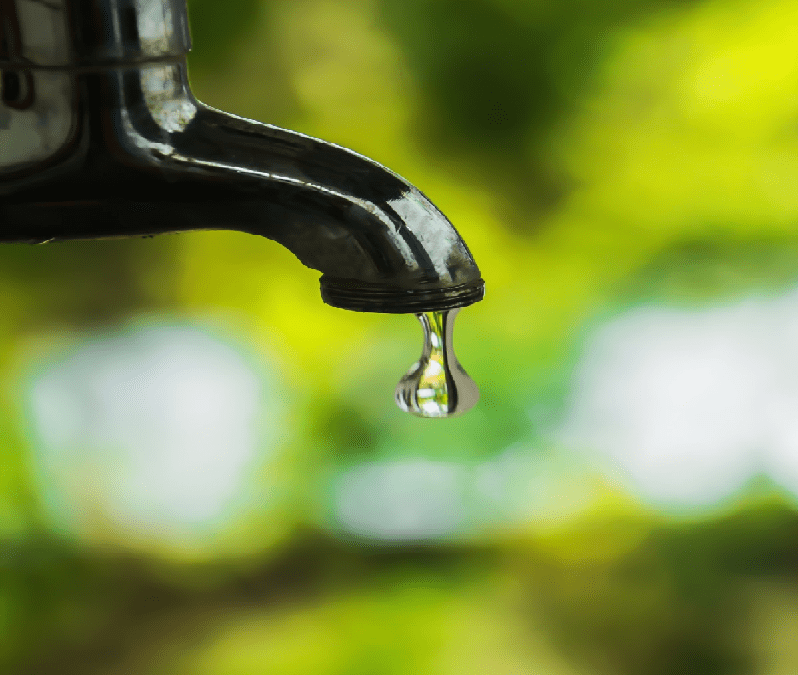
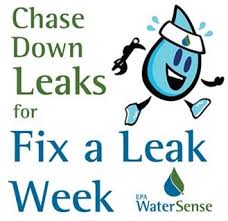 This year’s Fix a Leak Week runs from March 19 through March 25. It’s the perfect time to check for leaky kitchen and bathroom faucets, malfunctioning toilets and errant irrigation systems. Fixing some of these easily corrected household leaks can save homeowners about 10 percent on their water bills, according to the EPA.
This year’s Fix a Leak Week runs from March 19 through March 25. It’s the perfect time to check for leaky kitchen and bathroom faucets, malfunctioning toilets and errant irrigation systems. Fixing some of these easily corrected household leaks can save homeowners about 10 percent on their water bills, according to the EPA.
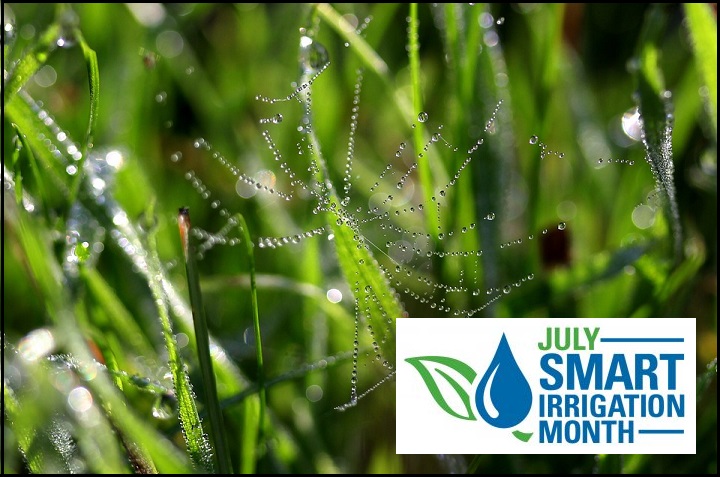

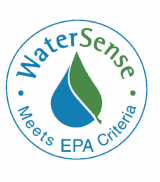
 Alternatively, you can simplify this system by replacing your standard clock timer controller with a WaterSense-labeled
Alternatively, you can simplify this system by replacing your standard clock timer controller with a WaterSense-labeled 

